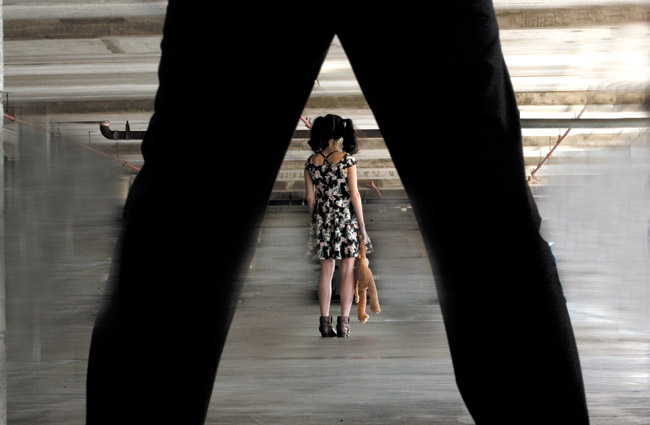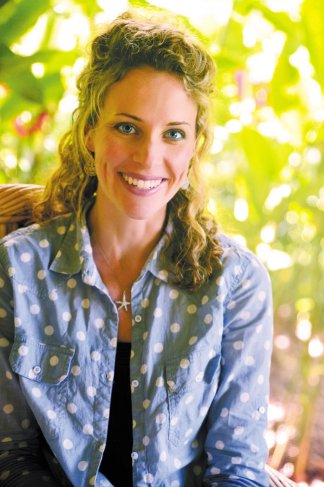To Save The Sexually Exploited
Jessica Munoz first became aware of young girls in Hawaii being sex trafficked in her work as an ER nurse. Appalled, she’s now working to build a facility where they can be made whole again. that’s why she’s actively fundraising
How often do we read about homelessness, sex assault or X social issue, and then put down the paper or click out of the web-site, glad that our family is safe. Then there’s nurse practitioner Jessica Munoz, who read about human trafficking several years ago while in grad school at UH, and a spark was ignited that quickly kindled into a purpose-driven blaze.
“Like most people, I assumed human trafficking happens overseas, not right here in our local community,” admits Munoz, who was particularly interested in how human trafficking relates to health care. None of her classes had touched on the subject, but as an emergency room nurse, the more she did her research, the more she couldn’t tear herself away.
“I started recognizing, wow, we have young girls and women being brought into our emergency room for care, and we’re not screening, we’re not asking questions related to sexual exploitation.”
When girls routinely arrived at the busy ER for care, whether for a common ailment such as the flu or something more sinister, like signs of an assault, no one was asking pertinent questions. The issue of sex trafficking hadn’t yet been brought to the public consciousness. These past four years, Munoz has made it her mission to drastically change that. She began studying about global and local sex trafficking, particularly in relation to minors. She published her findings in emergency physician journals and attended speaking engagements to enlighten healthcare professionals about screening for potential sex-trafficking victims.
“Then, you get to the point: Now what?” says Munoz. “We’ve identified these high-risk situations, now what do we do? That’s when I realized we don’t have anything residential for children who have undergone this kind of trauma.”
Approaching the local juvenile justice and child welfare systems, Munoz found that there were no programs in place, let alone residential programs, to address the recuperative needs of Hawaii’s minors who have been targeted by the sex industry. In fact, she discovered that rather than receiving needed therapeutic care, the children “rescued” were being locked in juvenile detention or corrections facilities, or were sent to recovery programs in Mainland facilities, where significant cultural differences create additional challenges for Hawaii girls.
“That just breaks my heart,” says Munoz. “Here we have a child who has gone through significant trauma, and the message that we send when we lock up the girls, when we put them in detention, when we put them in these programs on the Mainland, so far from home, is ‘You’ve done something bad, you have to be removed from society.’ That is horrible because it’s a crime that’s been committed against them … against a child. They didn’t have a choice.
“Though there is a new level of awareness in the Islands, again you get the phone calls from different social services agencies and the juvenile justice system saying, ‘What do we do with these girls now that we’ve identified them?’ That’s where Ho‘ola Na Pua comes in.”
Ho‘ola Na Pua, or New Life for Our Children, is Munoz’s Hawaii-based nonprofit, founded in 2013. Its mission is to provide minors who were sexually trafficked with a safe place to heal, a vision that is in the process of coming to fruition. Permitting is under way for a 12-acre parcel (the location must be kept secret) that will house 32 underage girls. The house will be staffed by professional care providers who are experts at tending to the needs of traumatized children.
“These kids have gone through complex trauma. It’s beyond PTSD,” Munoz points out. “Most of this abuse started when they were very young, between the ages of 3 and 10, and then they end up on the street ―compound that trauma with being raped sometimes 10, 15, 20 times a night. Stop and really think about that.
“We do as much as we can (providing mentorship, connecting trafficked children with resources and agencies, and speaking with thousands of community leaders, from law enforcement agencies to service providers). It’s just hard when you don’t have the location to do the complex and comprehensive intervention to meet the needs of kids who have gone through trafficking.”
Funds need to be raised and work done before the facility can open in January 2017. An existing structure on the DLNR-leased land has been heavily vandalized, requiring a major renovation before it’s rendered livable. Munoz is getting the home licensed by the state Department of Health as a special treatment facility for girls ages 11 to 18, which demands a particular timeline and process requirements. Importantly, Ho‘ola Na Pua needs to have $1 million capital in the bank before its doors can open.
The nonprofit just hosted an April 27 golf tournament to begin raising the needed funds, but its official fundraising campaign kickoff happens May 7, in conjunction with an awareness walk through Chinatown (hoolanapua.org), and volunteer walkers and sign holders are heartily encouraged to join in.
“It’s fitting that this will happen in Chinatown because that’s a very common place where underage kids are trafficked,” notes Munoz. “Our goal with the walk is to bring awareness to the issue of child sex trafficking in Hawaii, so that people recognize that it is a problem in our community and that community members are rising up and saying, ‘Not on my island.’ We’re not going to allow this to happen on our Islands any longer. Then, we bring awareness to what Ho‘ola Na Pua is doing about the issue.”
Further fundraising plans include an Oct. 17 gala. Meanwhile, Munoz continues actively seeking funds from church groups, businesses, foundations and any number of organizations. She also works with a steady group of volunteers, who have already spent time cleaning out the new building and, in the past two years, have met with 15,000 people, including law enforcement, medical providers and students whom they’ve educated on “stranger danger of the 21st century.” Volunteer hours carrying a worth of nearly $1 million already have been dedicated to work on the facility, business plan and organizational development.
“I remember the day I was driving home from work and had this vision of doing this facility, but I thought it was going to be just a small home,” laughs Munoz. “Next thing I know, we have been blessed with this amazing facility which provides a site conducive to our comprehensive, holistic program.”
Plans are for the girls to remain in the facility for one to two years, receiving on-site comprehensive care, including mental health care, physical care, education, and a panoply of therapies from equine to art, dance and more. The goal is to eventually transition the healed children back to their own families or, if necessary, to specially trained foster families.
“It’s ongoing mentorship and therapy,” says Munoz. “We’re creating a network of people in the community who will put our hands together and form a net for these girls.”
This net of care is invaluable, because without a situation in place for full recovery, the recidivism rate is high. Munoz describes the pernicious power of persuasion that preys on the emotional naivety of adolescents:
“People say, ‘Why doesn’t she just leave if she’s not chained up or in a cage?’ Whether they come from a good home or not ― and we have worked with a gamut of girls from all spectrums ― young girls are vulnerable. A trafficker will exploit that vulnerability and manipulate a girl into thinking that he loves her and if she loves him in return, she’ll do this for him. Oftentimes they’ll tell the girl ‘I’m saving all the money you make for us, for our future together.'”
Hawaii is touted in the Deep Web as a sex tourism destination, and our multitude of international business conventions, big sporting events, military bases and thriving tourism population makes Hawaii a prime location for traffickers to exploit young girls.
Helped along by Munoz and a growing network of equally concerned parties, this issue is finally receiving the attention it requires, especially considering that, as Munoz describes, Hawaii has a high juvenile run-away rate and a high rate of teen suicide and pregnancy ― all markers of an at-risk population of youngsters.
She refers to a study by the Centers for Disease Control that found that juveniles, once pulled into sex trafficking (which happens at the average age of 12), have a life expectancy of seven years, frequently losing their lives to homicide or HIV/AIDS.
“Somebody has got to speak out and say something,” she adds, “because if we don’t, then we’re just contributing to the problem. Once you are aware of this topic, you are charged with the ability to do something. Speak out, even if you’re just telling your daughter about this issue, because if we don’t talk about it, it will never stop, and we’ll continue to allow our children to be abused and exploited right beneath our noses. And I am not OK with that. Until the day I die, I will speak out for these kids because they deserve it. They deserve healing and restoration.
“These girls are some of the most amazing young women I’ve ever met. They are fighters. They are more than survivors, they are conquerors. To have gone through what they have gone through and to still be alive is pretty amazing.”







